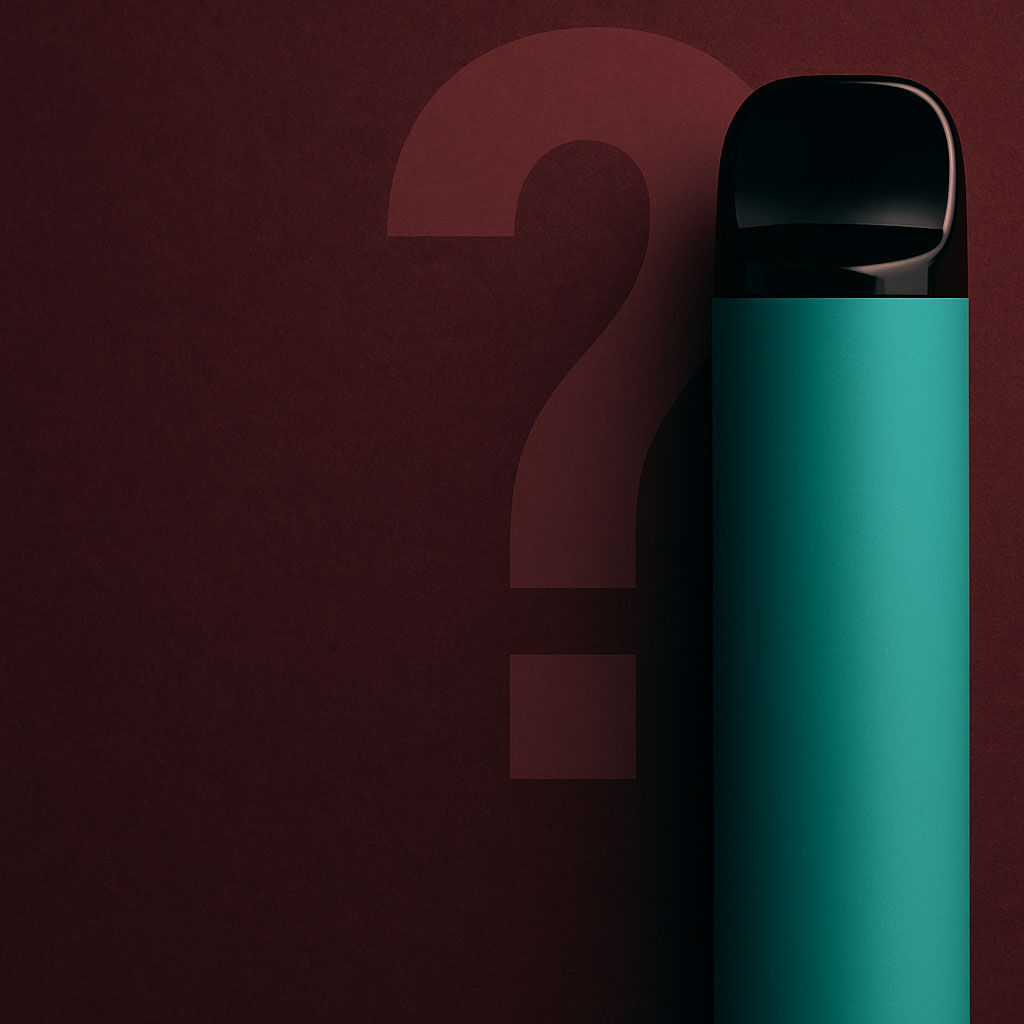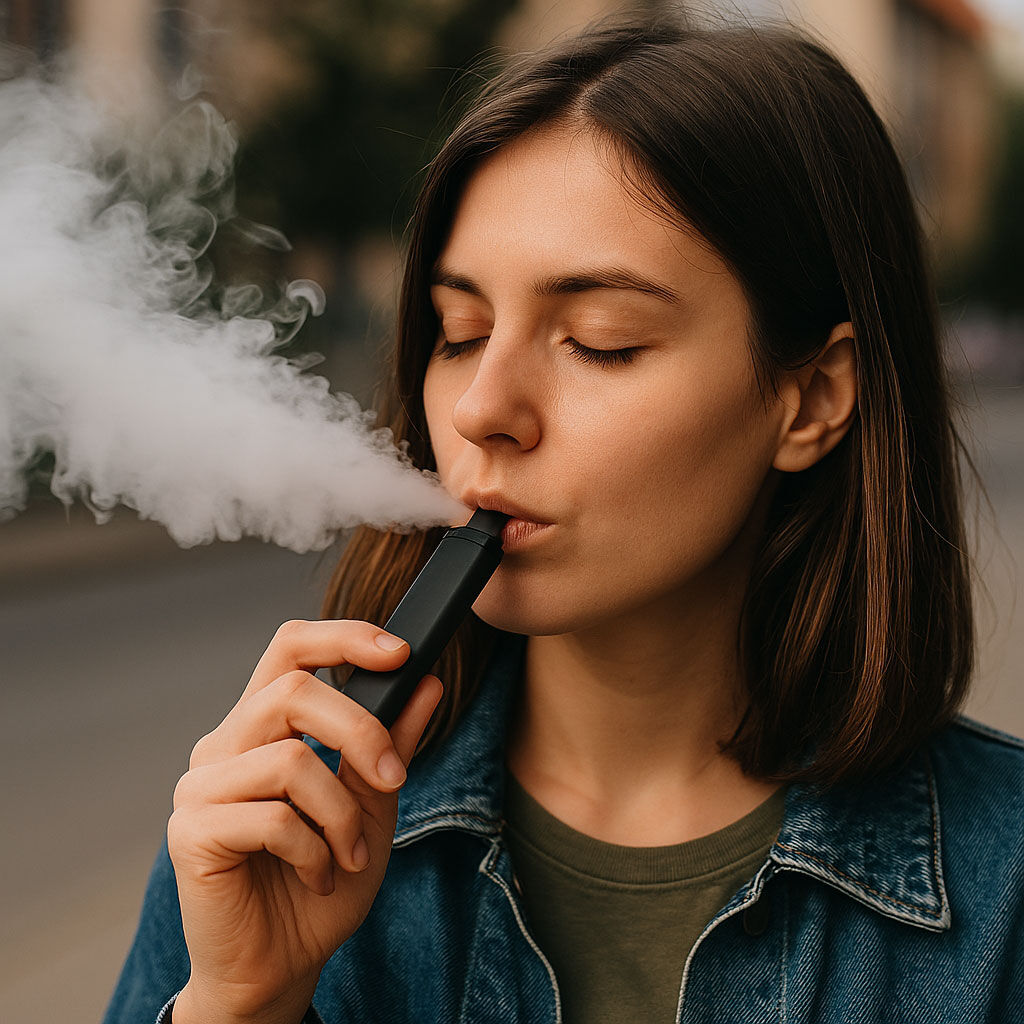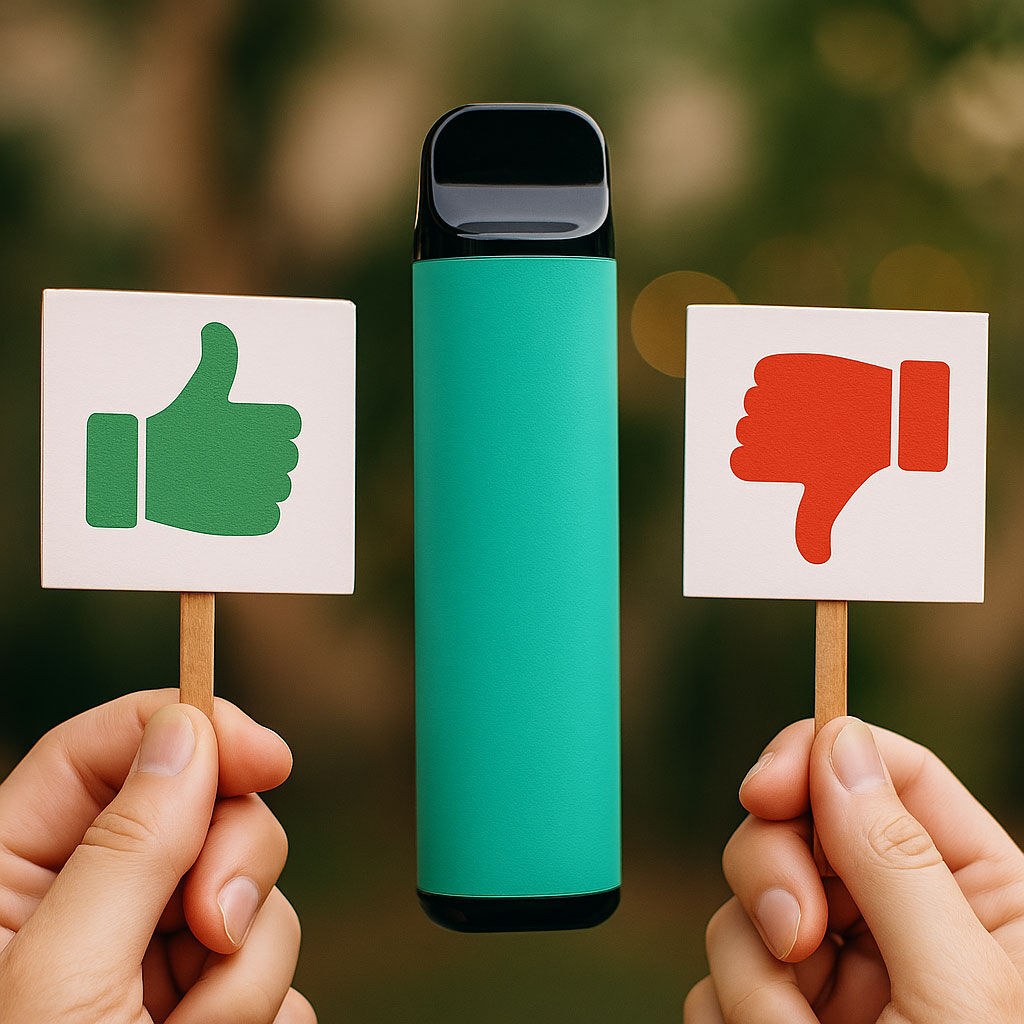Disposable vapes are designed with simplicity and convenience in mind for everyday consumers. It's easy to pick one up and toss, repeating until you satiate your needs. However, simplicity often hides the complexity of its design. Underneath the flavor may have adverse effects if you're overindulging, which happens under most addictive behaviors.
So, is a disposable vape safe? The answer depends on what you're comparing it to-and how deep you're willing to look. This article breaks down the anatomy of a disposable vape, then walks through the three core risk areas: toxic metals, chemical flavors, and fire-prone batteries. Finally, we share fundamental ways you can vape smarter-or safely quit.
What Is a Disposable Vape?
A disposable vape is a small, non-rechargeable vaping device pre-filled with e-liquid, typically made from nicotine salts, propylene glycol, glycerin, and flavorings. Once the battery dies or the liquid runs out, the entire device is thrown away.
They're known for their convenience: no maintenance, no refilling, no charging. Just open, inhale, and discard. Many users turn to disposables to quit cigarettes. Others are drawn in by the variety of flavors and smooth throat hit.
But just because they're convenient doesn't mean they're low-risk.

Is Disposable Vape Safe? The Full Picture
When people ask this, they're usually trying to compare it to traditional cigarettes. And yes, disposables may contain fewer toxins than combusted tobacco. However, that doesn't make them entirely safe, especially when it comes to exposure to heavy metals, inhalation of chemicals, and hazards associated with batteries.
Let's break each one down.
Heavy Metal Exposure: A Deeper Dive into Nervous System Damage
Disposable vapes have been shown to emit more lead, nickel, and antimony than traditional cigarettes. A 2025 study from UC Davis found that some disposable vapes released more than a day's worth of toxic metal exposure in just one session.
These metals originate from the heating coils inside the device, which break down during use and become aerosolized, entering your lungs. Once inhaled, they enter the bloodstream and can cross the blood-brain barrier.
-
Lead disrupts neurotransmitters and interferes with calcium signaling in neurons. Even low exposure can impair learning, memory, and behavior.
-
Nickel is both carcinogenic and neurotoxic, known to damage nerve tissue over time.
-
Antimony may trigger oxidative stress and inflammation, particularly in lung and brain tissue.
In teenagers, the risk is even higher. Urine tests show that youth who frequently vape have elevated levels of lead and uranium metals tied to long-term cognitive and neurological problems.

Chemical Additives & Flavors: The Hidden Lung Irritants
Many disposable vapes contain flavoring chemicals that have never been tested for inhalation, but only for ingestion. That makes them risky by default.
-
Diacetyl in e-liquid, a buttery flavoring used in many sweet e-liquids, has been linked to "popcorn lung," a severe and irreversible lung disease.
- Other additives, such as ethyl maltol, vanillin, and cinnamaldehyde, have been shown to damage lung cells and inflame airways.
A UCSF study found that flavorings alone activated dopamine circuits in the brain- mimicking addiction patterns and reinforcing usage behaviors.
Base ingredients like propylene glycol and vegetable glycerin break down under heat to release formaldehyde, acrolein, and other aldehydes-all of which irritate lung tissue and may raise cancer risk with continued exposure. To learn more about flavor-related risks, explore our coverage on popcorn lung.
Battery Safety & Fire Risk: When Convenience Becomes Dangerous
Disposable vapes are powered by small lithium-ion batteries, which can overheat or explode when damaged, overcharged, or exposed to water.
Most incidents are caused by users charging devices improperly or tossing them in household bins where they're crushed and ignited.
Even online trends, like submerging vapes in water for "quitting," have triggered explosions and burns.
A single battery failure can cause:
-
Burns
-
House fires
-
Toxic gas exposure
-
Injuries from explosions or shrapnel
Want tips on protecting your device? Read our Vape battery safety guide to stay charged safely.
Safer Choices & Precautions
If you're vaping right now, you don't have to quit cold turkey. Maybe you started to break away from cigarettes or wanted something that felt cleaner than smoke. That's valid. But you still deserve to know what's in your device-and how to protect yourself.
Start by switching to refillable, rechargeable vapes made by brands that share lab results and ingredient transparency. Look for e-liquids that avoid flavoring agents like diacetyl or cinnamaldehyde. Never leave your vape charging overnight or plugged in on flammable surfaces. And don't fall for TikTok trends-submerging a lithium battery in water won't help you quit, but it might burn your house down.
When your device reaches the end of its life, recycle it properly through electronic or hazardous waste programs. Tossing it in the kitchen trash is a recipe for a fire.
If your goal is to quit entirely, support exists.

Final Thoughts
So, is disposable vape safe? A rather lengthy answer, it does have its risks, particularly with overindulgence and misuse. Disposable vapes may cut out tar from typical cigarette combustion, but they may also introduce toxic metals, lung-damaging chemicals, and faulty batteries. For teens and first-time users, it's essential to safeguard yourself and understand the risks associated with disposable vapes.
At Ruthless Vapor, we believe in straight answers. Whether you're just getting started or trying to stop, we want to help you understand what you're inhaling-and what safer options look like.




Leave a comment
All comments are moderated before being published.
This site is protected by hCaptcha and the hCaptcha Privacy Policy and Terms of Service apply.